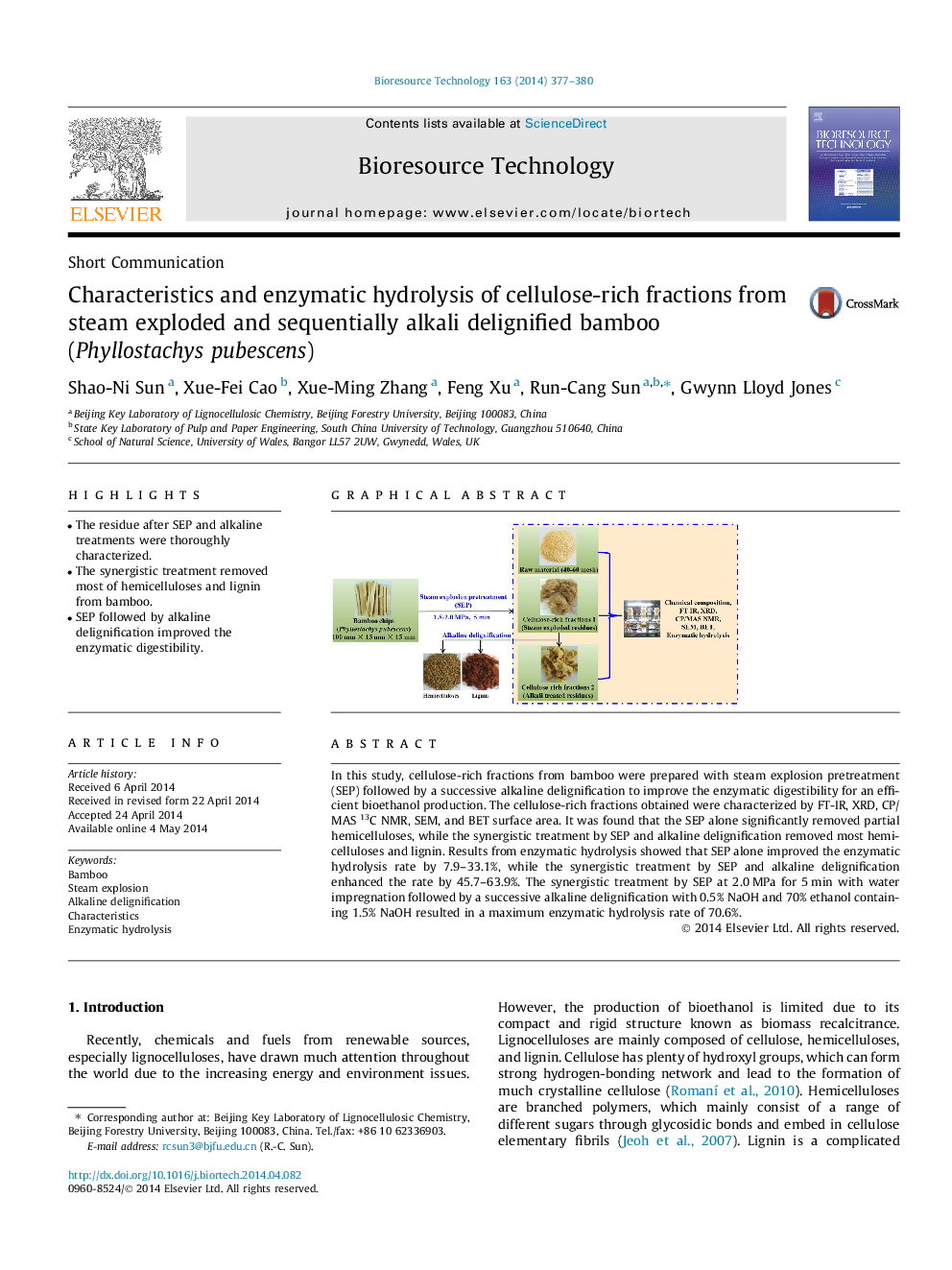| Article ID | Journal | Published Year | Pages | File Type |
|---|---|---|---|---|
| 680894 | Bioresource Technology | 2014 | 4 Pages |
•The residue after SEP and alkaline treatments were thoroughly characterized.•The synergistic treatment removed most of hemicelluloses and lignin from bamboo.•SEP followed by alkaline delignification improved the enzymatic digestibility.
In this study, cellulose-rich fractions from bamboo were prepared with steam explosion pretreatment (SEP) followed by a successive alkaline delignification to improve the enzymatic digestibility for an efficient bioethanol production. The cellulose-rich fractions obtained were characterized by FT-IR, XRD, CP/MAS 13C NMR, SEM, and BET surface area. It was found that the SEP alone significantly removed partial hemicelluloses, while the synergistic treatment by SEP and alkaline delignification removed most hemicelluloses and lignin. Results from enzymatic hydrolysis showed that SEP alone improved the enzymatic hydrolysis rate by 7.9–33.1%, while the synergistic treatment by SEP and alkaline delignification enhanced the rate by 45.7–63.9%. The synergistic treatment by SEP at 2.0 MPa for 5 min with water impregnation followed by a successive alkaline delignification with 0.5% NaOH and 70% ethanol containing 1.5% NaOH resulted in a maximum enzymatic hydrolysis rate of 70.6%.
Graphical abstractFigure optionsDownload full-size imageDownload as PowerPoint slide
